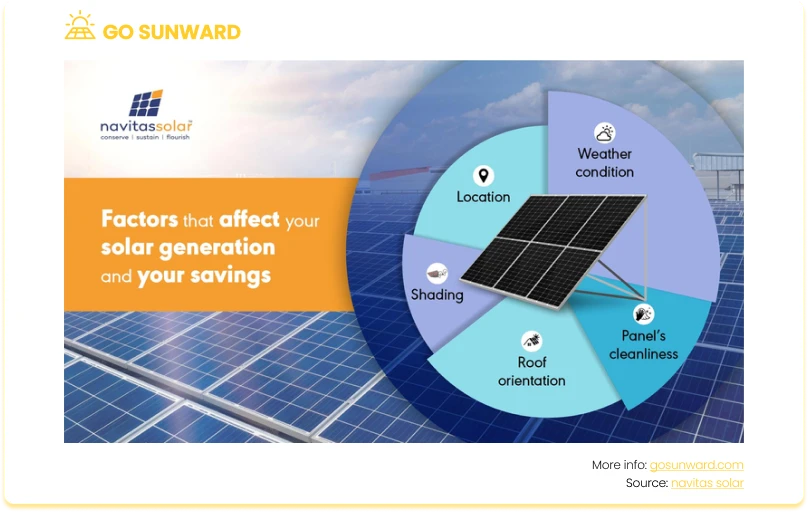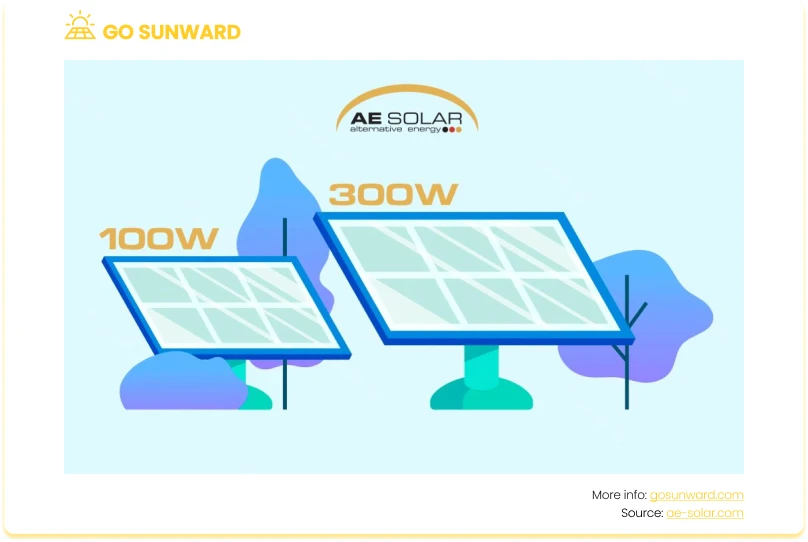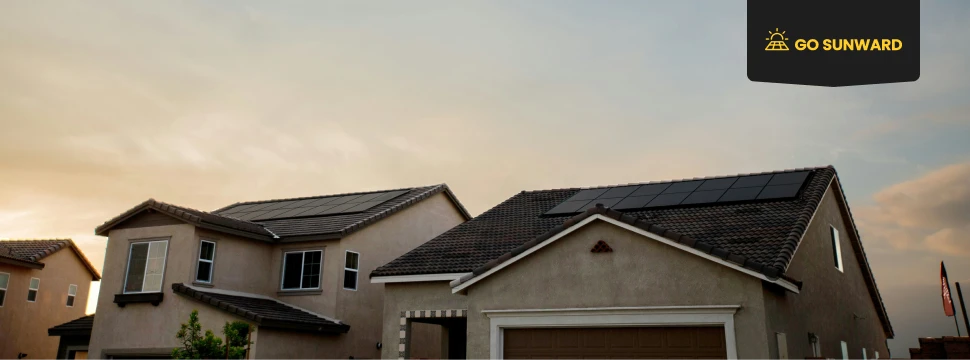How Much Electricity Do You Get From Solar?
Solar energy has emerged as a pivotal player in transitioning towards a cleaner and more sustainable global energy system. With the increasing awareness of climate change and the urgent need to reduce greenhouse gas emissions, solar power has gained significant popularity as a reliable and environmentally sustainable source of electricity. In this article, we aim to answer the question of ‘how much electricity do you get from solar’. In doing so, we can help individuals and businesses in their switch to solar energy.
As solar energy continues to gain traction, it becomes imperative for consumers to grasp the fundamentals of solar panel electricity production. The amount of electricity a solar panel can generate is a critical factor that influences the feasibility and effectiveness of a solar energy system. Whether you’re a homeowner looking to reduce your carbon footprint or a business owner exploring sustainable energy options, understanding the factors that impact solar panel performance is essential.
We will also explore the factors determining solar panel electricity generation, including geographical location, panel efficiency, sunlight exposure, and more. We will also provide insights into how you can estimate the electricity output of a solar panel system. By the end of this article, you will have a comprehensive understanding of the variables at play in electricity production. You will also have the tools available to calculate the electricity production potential of your solar panels.
Go over here if you’re looking for something more simple, this article covers the basics around how solar panels work, including details on how sunlight is used to make solar energy.
Understanding Solar Energy Basics
Solar technologies harness the power of sunlight, either by utilizing photovoltaic (PV) solar panels or by using mirrors to concentrate solar radiation in solar CSP. The converted energy can then be employed for electricity generation, or it can be stored in batteries or thermal storage systems for later use. Go here if you need more information on how exactly how solar energy works. We also have a short guide that covers how much energy a single solar panel can produce.
Solar PV
Solar PV technology operates through the utilization of the photovoltaic effect, a phenomenon in which photons, the fundamental units of light, strike the surface of a semiconductor material like silicon. This interaction energizes electrons within the material, causing them to break free from their atomic bonds.
As electrons, each carrying a negative charge, move toward the front surface of the solar cell, an electrical imbalance arises between the cell’s front and back surfaces. This imbalance generates a voltage potential, similar to a battery’s positive and negative terminals. The electrical conductors on the cell absorb these electrons. Electric current flows through the circuit when the conductors are connected to an external load, like a battery. This flow of electric current constitutes what is known as direct current (DC). This is then converted into alternating current (AC) using solar inverters.
Solar CSP systems
Solar CSP systems, on the other hand, use mirrors or lenses to concentrate sunlight onto a receiver. This is then is converted into thermal energy. The concentrated sunlight can reach very high temperatures, and this heat is then used to produce steam. The steam, in turn, drives a turbine connected to a generator, producing electricity.
CSP technology often incorporates thermal energy storage systems that allow for electricity generation, even when the sun is not shining. This provides a more consistent and dispatchable power supply. Solar CSP is usually deployed in large-scale utility plants. Making it a viable option for areas with high direct sunlight.
Useful Key Terms:
- Solar Irradiance: Solar irradiance refers to the amount of sunlight energy that reaches a specific area over a given period, typically measured in watts per square meter (W/m²). It quantifies the intensity of sunlight at a particular location.
- Solar Capacity: Solar capacity represents the maximum amount of electricity a solar panel or array can generate under ideal conditions. It is usually expressed in kilowatts (kW) or megawatts (MW).
- Solar Efficiency: Solar efficiency measures how effectively a solar panel converts incoming sunlight into electricity. It is expressed as a percentage and represents the ratio of electricity produced to the amount of sunlight received.
Factors Affecting Solar Electricity Production
Solar electricity production is influenced by various factors that can significantly impact panel output, in terms of efficiency and effectiveness. For example, consider two solar panels: one with an efficiency rating of 18% and another with 22%. Over a year, the higher-efficiency panel will produce more electricity, making it a cost-effective choice despite its initial price premium.
By better understanding the factors and their effects on solar panel electricity production, it is easier to make informed decisions when designing and installing a solar energy system. Optimizing these variables to suit your specific location and requirements will help you harness the full potential of solar power and maximize its benefits.
Tilt Angle and Orientation of Solar Panels:
The angle at which solar panels are tilted and their orientation with respect to the sun plays a crucial role in electricity generation. Solar panels facing south and tilted at an angle equal to the latitude of the installation location tend to maximize energy production in many regions. However, optimal tilt and orientation may vary based on specific geographical factors.
Shading from Nearby Objects:
Obstructions such as trees, buildings, or other structures can cast shadows on solar panels, reducing their sunlight exposure and, consequently, electricity generation. For instance, if a tree partially shades a solar panel array during the day, it can significantly decrease energy output, especially during peak sunlight hours.
Climate and Weather Conditions:
Climate and weather patterns have a direct impact on solar electricity production. Cloudy or rainy days can diminish energy output, while sunny conditions can maximize it. When estimating solar panel performance, it’s important to consider the average annual sunlight hours in regions with unpredictable weather.
Temperature:
Solar panel efficiency can decrease as temperatures rise. Extremely hot conditions can reduce electricity production, so monitoring and managing panel temperature is essential for maintaining optimal performance.
The System Itself:
Within the solar energy system itself, several factors determine solar panel electricity production. Inverter efficiency is crucial, as it converts DC electricity into AC electricity for household use, with efficient inverters maximizing energy output.
Solar panel degradation and cleanlines, a gradual process influenced by panel quality and environmental conditions, can be mitigated through regular maintenance. Additionally, system and panel size significantly impacts electricity production, with larger systems like solar arrays generating more power and offering substantial solar savings and reduced grid reliance.

Calculating Solar Energy Output
Now that we’ve explored the fundamental principles and factors affecting solar energy production, let’s delve into the practical aspect of calculating the electricity output of a solar panel system. Understanding how to estimate your potential solar energy output is crucial when planning a solar installation.
Wattage Rating and Capacity of Solar Panels:
Solar panels are typically rated in watts (W) or kilowatts (kW). This rating represents the maximum power output of the panel under standard test conditions. To calculate the potential energy output of your solar panel system, start by determining the combined wattage or kilowatt capacity of all the panels in your array. For instance, if you have ten 300W panels, your total capacity would be 3,000W or 3kW.

Solar Exposure in Your Region:
To estimate energy output, you’ll need to know the solar irradiance in your region, which quantifies the amount of sunlight your panels will receive. Solar exposure is often expressed in terms of average daily sunlight hours for your location.
This information is typically available from local weather agencies or solar resource maps. In the United States, the National Renewable Energy Laboratory (NREL) offers comprehensive access to a wealth of renewable energy resource information via a range of tools, maps, reports, and data collections, which will help you assess your sunlight availability.
Daily and Annual Energy Production:
To calculate daily energy production, multiply your solar panel system’s capacity (in kW) by the average daily sunlight hours (in hours) for your area. This gives you the daily energy production in kilowatt-hours (kWh).
To estimate annual energy production, multiply the daily energy production by 365 days. This will give you the total energy output annually.
Example Calculation:
Let’s say you have a 5 kW solar panel system installed in a region with an average of 5 hours of sunlight per day.
Daily energy production = 5 kW × 5 hours = 25 kWh
Annual energy production = 25 kWh/day × 365 days = 9,125 kWh/year
Tools for Calculating Solar Energy Output:
Several websites and tools are available that can automate these calculations based on your location, panel specifications, and other relevant factors. These calculators provide a quick and accurate estimate of your solar energy potential.
If you’re working on a more complex solar installation, professional solar design software can offer detailed simulations and predictions of energy output. These tools take into account shading, panel orientation, and other factors to provide precise estimates.
By following these steps and utilizing available tools, you can calculate the potential electricity output of your solar panel system. This information is invaluable for budgeting, assessing the return on investment, and understanding how solar energy can meet your specific energy needs.
Maximizing Solar Energy Production
To make the most of your solar energy system and ensure it operates at peak efficiency, it’s essential to implement strategies and practices that maximize electricity production.
Proper Maintenance and Cleaning of Solar Panels:
Regularly maintaining and cleaning solar panels are crucial to keep them operating efficiently. Dust, dirt, and debris can accumulate on the surface of the panels, reducing their ability to capture sunlight.
Schedule periodic inspections and cleaning to remove any obstructions. Be cautious when cleaning, using only approved cleaning solutions and non-abrasive materials to avoid damaging the panels.
Investing in Energy Storage Solutions like Batteries:
Energy storage systems, such as batteries, enable you to store excess electricity generated during the day for use during the night or on cloudy days. This will ensure you have a consistent power supply even when sunlight is limited. Coupling your solar panel system with energy storage can increase your energy independence and reduce reliance on the grid. The angle and orientation of optimal solar panels for one season may not be suitable for another due to the sun’s changing position in the sky.
Monitoring and Adjusting Panel Orientation for Seasonal Changes:
Consider installing a solar tracking system or manually adjusting the tilt and orientation of your panels to optimize their alignment with the sun’s path throughout the year.
Combining Solar Power with Other Renewable Energy Sources:
To further enhance your energy generation and sustainability, consider integrating solar power with other renewable energy sources like wind or hydroelectric power. Combining multiple renewable energy sources can provide a more consistent and reliable energy supply, as different sources may be more productive at different times.
Regular System Monitoring:
Install a monitoring system to keep track of your solar panel’s performance in real time. Many solar inverters come with built-in monitoring features. Monitoring allows you to identify and address issues promptly, ensuring your system operates optimally.
Conclusion
Solar energy, harnessed through photovoltaic technology, offers a renewable and environmentally friendly way to convert sunlight into electricity. Its inexhaustible supply, coupled with advancements in efficiency and affordability, has made it a popular choice for individuals, businesses, and communities seeking to reduce their carbon footprint. If you’re looking to lower your average electricity cost, and help the world go green, then we’re on board ☀️
The factors influencing solar energy production, including panel efficiency, geographical location, shading, and climate, are pivotal in determining the success of a solar installation and help address the question of how much electricity do you get from solar. By calculating your solar energy output and optimizing your system through maintenance, storage solutions, and panel adjustments, you can help you make the most of this abundant and clean energy source.




